第188章
I always carried a stock of medicines with me; and a small phial of quinine, which I had bought at Para in 1851, but never yet had use for, now came in very useful.I took for each dose as much as would lie on the tip of a penknife-blade, mixing it with warm camomile tea.The first few days after my first attack I could not stir, and was delirious during the paroxysms of fever; but the worst being over, I made an effort to rouse myself, knowing that incurable disorders of the liver and spleen follow ague in this country if the feeling of lassitude is too much indulged.So every morning I shouldered my gun or insect-net, and went my usual walk in the forest.The fit of shivering very often seized me before I got home, and I then used to stand still and brave it out.When the steamer ascended in January, 1858, Lieutenant Nunes was shocked to see me so much shattered, and recommended me strongly to return at once to Ega.I took his advice, and embarked with him, when he touched at St.Paulo on his downward voyage, on the 2nd of February.I still hoped to be able to turn my face westward again, to gather the yet unseen treasures of the marvellous countries lying between Tabatinga and the slopes of the Andes; but although, after a short rest in Ega, the ague left me, my general health remained in a state too weak to justify the undertaking of further journeys.At length I left Ega, on the 3rd of February, 1859, en route for England.
I arrived at Para on the 17th of March, after an absence in the interior of seven years and a half.My old friends, English, American, and Brazilian, scarcely knew me again, but all gave me a very warm welcome, especially Mr.G.R.Brocklehurst (of the firm of R.Singlehurst and Co., the chief foreign merchants, who had been my correspondents), who received me into his house, and treated me with the utmost kindness.I was rather surprised at the warm appreciation shown by many of the principal people of my labours; but, in fact, the interior of the country is still the "sertao" (wilderness)--a terra incognita to most residents of the seaport--and a man who had spent seven years and a half in exploring it solely with scientific aims was somewhat of a curiosity.I found Para greatly changed and improved.It was no longer the weedy, ruinous, village-looking place that it appeared to be when I first knew it in 1848.The population had been increased to 20,000 by an influx of Portuguese, Madeiran, and German immigrants, and for many years past the provincial government had spent their considerable surplus revenue in beautifying the city.The streets, formerly unpaved or strewn with loose stones and sand, were now laid with concrete in a most complete manner, all the projecting masonry of the irregularly-built houses had been cleared away, and the buildings made more uniform.Most of the dilapidated houses were replaced by handsome new edifices, having long and elegant balconies fronting the first floors, at an elevation of several feet above the roadway.
The large, swampy squares had been drained, weeded, and planted with rows of almond and casuarina trees, so that they were now a great ornament to the city, instead of an eyesore as they formerly were.My old favourite road, the Monguba avenue, had been renovated and joined to many other magnificent rides lined with trees, which in a very few years had grown to a height sufficient to afford agreeable shade; one of these, the Estrada de Sao Jose, had been planted with cocoa-nut palms.Sixty public vehicles, light cabriolets (some of them built in Para), now plied in the streets, increasing much the animation of the beautified squares, streets, and avenues.
I found also the habits of the people considerably changed.Many of the old religious holidays had declined in importance, and given way to secular amusements--social parties, balls, music, billiards, and so forth.There was quite as much pleasure seeking as formerly, but it was turned in a more rational direction, and the Paraenses seemed now to copy rather the customs of the northern nations of Europe than those of the mother country, Portugal.I was glad to see several new booksellers' shops, and also a fine edifice devoted to a reading-room supplied with periodicals, globes, and maps, and a circulating library.There were now many printing-offices, and four daily newspapers.The health of the place had greatly improved since 1850, the year of the yellow fever, and Para was now considered no longer dangerous to newcomers.
So much for the improvements visible in the place, and now for the dark side of the picture.The expenses of living had increased about fourfold, a natural consequence of the demand for labour and for native products of all kinds having augmented in greater ratio than the supply, through large arrivals of nonproductive residents, and considerable importations of money on account of the steamboat company and foreign merchants.Para, in 1848, was one of the cheapest places of residence on the American continent; it was now one of the dearest.Imported articles of food, clothing, and furniture were mostly cheaper, although charged with duties varying from 18 to 80 percent, besides high freights and large profits, than those produced in the neighbourhood.Salt codfish was twopence per pound cheaper than the vile salt pirarucu of the country.Oranges, which could formerly be had almost gratis, were now sold in the streets at the rate of three for a penny; large bananas were a penny each;tomatoes were from two to three pence each, and all other fruits in this fruit-producing country had advanced in like proportion.